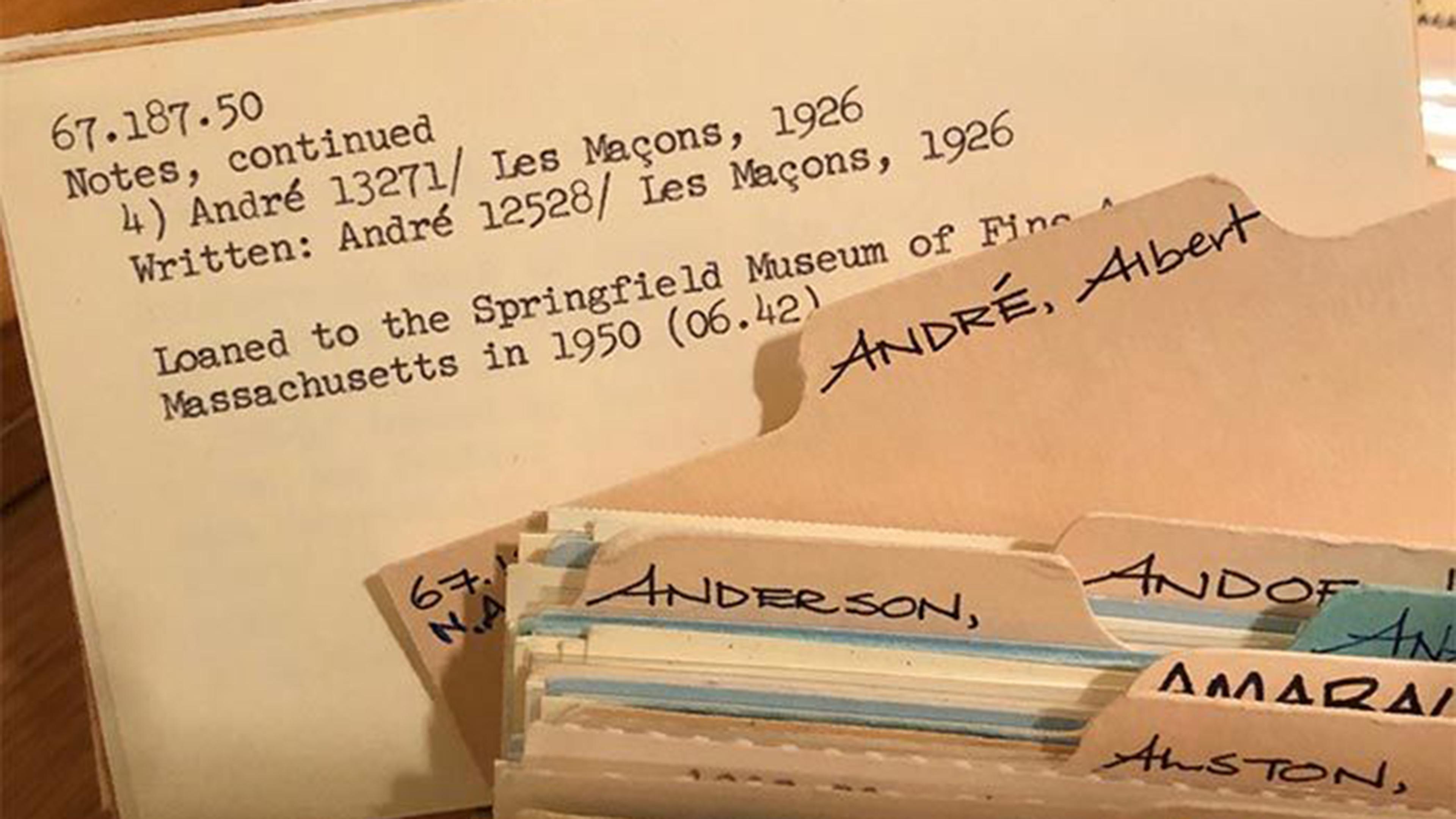The subject of this delightful painting is unusual. We see in close-up three masons repairing a chimney on the roof of a building in Bagnols-sur-Cèze in the South of France. Albert André must have captured the scene from the roof of a neighboring building. At the time he lived in this historic small town in the South of France. Also notable is that André worked as a curator at the city’s museum that after his death was named after him.
During the 1890s, André had studied at the Académie Julian in Paris, where he met the artists of the Nabis group, among them Bonnard, Vuillard, and Denis. Although two decades older than André, Renoir became a close friend and supporter. Renoir introduced André to the renowned art dealer Paul Durand-Ruel. Durand-Ruel’s branch in New York also represented André in the United States, which explains why his works are in major museums in this country, among them the Museum of Modern Art in New York and the Art Institute in Chicago.
Before entering The Met’s collection, The Masons was owned by Adelaide Milton de Groot. Born in New York City, de Groot was the youngest of five daughters of William de Groot, a ship owner employed in the China trade. In 1891, when she was fifteen, the family moved to Nice. In the 1920s, she moved to Paris where she pursued painting and collected art, before returning to New York in the 1930s. Upon her death at the age of 91 in 1967, her large collection of paintings, drawings, and sculptures was bequeathed to the museum.
The de Groot papers in The Met archives contain no information on the sources or dates for her acquisitions. Until each work was researched further, all of the de Groot collection was added to The Met website’s Provenance Research Project, or the “gap list” of works of art that may have been in continental Europe with gaps in known ownership between 1933 and 1945.
Provenance research begins with the departmental object file and catalogue cards, the latter maintained for every object before The Met transitioned to its computerized database, and are still valuable resources for collection researchers. The cards for the André painting recorded two five- digit numbers written on the back of the painting’s frame. After consulting every André book in Watson Library, without finding a reference to The Masons, we did learn that his dealer was the Durand-Ruel gallery in Paris. An email query to the Durand-Ruel archives confirmed that the verso numbers corresponded to gallery stock and deposit numbers. The gallery sold the painting to de Groot in July 1927 and stored it for her there from December 1927 to December 1929.
Working with technicians to remove backboards from paintings in the storerooms in an ongoing project to photograph verso labels and inscriptions, we noticed several de Groot bequest works had the same type of handwritten label with artist name, title, number. The numbers were similar to those identified for The Masons. Although the drawings in the de Groot bequest were no longer in their original frames, a few of their catalogue cards had five-digit numbers recorded from their discarded backboards. All of the numbers turned out to be Durand-Ruel deposit numbers, leading to the re-dating of a painting by Moise Kisling and solving the ownership dates for thirteen additional works nearly fifty years after they entered the Museum collection.
Many Modern and Contemporary department objects were acquired before the importance of provenance history became widely recognized. As we continue more in-depth cataloguing of the collection, we are grateful to those cataloguers before us who painstakingly transcribed every label and marking, providing early provenance clues taken from the objects themselves.
